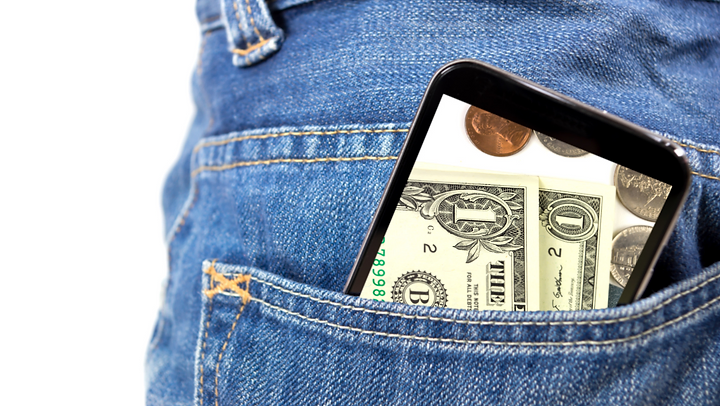You can manage your payments using digital wallet

What is a digital wallet?
Digital wallets have become increasing popular over the last few years. As society becomes increasing tech-based and “digital” our financial habits follow the same trend. According to Bankrate.com, “Digital wallets are exactly what they sound like: a digital version of your financial accounts made easily accessible via computer, smartphone or smart device. This ultimately eliminates much of the need to carry around your actual wallet.
There are many different versions of digital wallets but the most popular versions currently are Apple Pay®, Google Pay™, Samsung Pay™, Venmo and PayPal. One unique feature of digital wallets is that you don’t have to exclusively use one platform.
For example, I personally use Google Pay™ incase I forget my wallet on a grocery store run or to pay my son’s weekly daycare expense. However, due to the social features of Venmo, I use their platform to pay my friends back for dinner, a concert ticket or when I don’t have cash on-hand. Each platform has pros and cons as well as individual features that make it unique. Deciding which platform(s) to use will ultimately depend on the needs of the consumer.

How do I use my digital wallet?
To use digital wallet, you must first upload any card(s) to your digital wallet. Once you enter your card’s information and verify the card with your bank (each digital wallet will walk you through their process of verification step-by-step), you will be ready to conduct payments at any retailer that accepts digital payments.
Those retailers that feature digital payments will have a contactless payment indicator (this looks like a WiFi symbol) on their card-reader or point of service. Once your card has been entered into your digital wallet it is encrypted and is only accessible when you unlock it or authorize use of it.
In addition to making payments, digital wallets act like your physical wallet and can store valuable information, including: boarding passes, concert tickets, hotel reservations, gift cards, or retail loyalty cards.
Digital wallet use is on the rise.
One main contributing factor to the increase of digital wallets users is that they offer consumers a convenient, efficient and secure method for virtual payments, tickets, gift cards and more. Juniper Research anticipates that “by 2024, remote purchases for digital and physical goods will exceed 285 billion transactions per annum; an 80% increase on the figure for 2019. And, that values will increase by nearly 60% to over $9 trillion.” Another reason can be attributed to the demand for contactless payment methods in the age of the coronavirus pandemic.
Is my digital wallet secure?
Despite the overall increase of digital wallet users, particularly with millennials who make up the majority of users on Venmo, many Americans are sticking to traditional cards because of concerns for their financial security.
A survey by Experian found that “55 percent of all consumers are sticking with traditional credit cards because of safety concerns.” What if my phone is stolen? What if hackers obtain my financial information? “To many users’ surprise, the answer is no — digital wallets are actually more secure than your physical cards”, according to Bankrate.com.
Why is this? Since mobile payments are heavily encrypted and tokenized, none of your actual card or account numbers are stored within the digital wallet. Additionally, many digital wallet platforms require two-step authentication to prevent fraudulent purchases; this extra layer of protection is usually done through PIN, facial recognition, or fingerprint.
#DigitalWallet #ApplePay #GooglePay #DigitalBankingServices #DigitalBankingTools #NCFCU #YourCommunityCreditUnion
